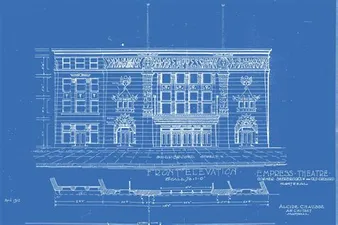Contemporary architecture in the form of materials, processes, and techniques used in the day, has immensely contributed to the heat gain in India. However, that is not the only issue. The root of this problem lies in the urban planning stage. With an uncontrolled population migrating to cities, quick, economical and large built masses need to be constructed to accommodate all the ever-growing needs, which end up being major contributors to the heat gain. Our cities lack green pockets that can act as the lungs and keep the temperature and air quality in the city under control. There is a need for a joint effort by the architects, urban planners and government stakeholders to design more sustainable cities to enhance the standard of living. Additionally, we need to stop treating buildings as passive entities that are alienated from their context, and rather design them such that they seamlessly blend into the setting they evolve from.
The modern movement changed the language of architecture altogether. Materials like concrete and glass fulfilled the need for quick and economical construction while representing the aesthetic of the time. The movement had its influence across India as well. There is no denying that today, glass is extensively being used for all building typologies, whether it is the exteriors or interiors, which is turning them into a heating furnace. As a material, glass has some phenomenal properties and has been a boon in architecture. It helps light penetrate and can enable excellent visual connectivity within spaces. Minimizing the use of glass on the western and the southern side, or providing shading devices are a few ways one can use glass and at the same time combat the unprecedented heat ingress.
Just like glass, the use of concrete is inevitable due to its many advantages of easy availability, and quick, strong, and comparatively economical construction. The way forward is to use composite materials. Instead of having the entire structure built in concrete, materials like Aerocon blocks, concrete hollow blocks or even bricks can be used that will help the building breathe and insulate it from extra heat gain. Infill slabs using a mix of earthen pots along with concrete can work as an efficient passive cooling construction technique that can be used. Additionally, perforated cladding techniques, in the form of jalis or louvers, can act as shading devices while enhancing the structure’s aesthetic value. The tropical climate in most Indian cities demands adopting passive cooling technologies for seamless cross ventilation. Instead, buildings today are impregnable blocks that barely breathe in any air, escalating the need for air-conditioning extensively. It is a vicious cycle that can only stop by embracing highly contextualized design solutions. Excessive use of metals, glass, concrete, and certain compounds of plastics like PVC, makes it harder to cope with India’s sweltering climate. It is not just the use of some of these materials, but their making process itself that adds heavily to the carbon footprint of our cities.
Besides issues like extensive use of impervious materials, we are unable to make the optimum use of older buildings in our cities. The construction process in itself has a large role to play in the heat emission that adds up to microclimate change within a city adaptive reuse can save us cost, and material and ultimately curb heat gain.
There are several ways to renew the old fabric of the city and revamp it to suit our current needs. Our buildings are constructed to last for 100+ years, and we should definitely harness their potential. The issue of heat gain due to the construction industry is not just an Indian, but a global phenomenon. For example, Dubai has a sweltering and dry climate. Nevertheless, we see elaborate glass structures that look elegant and aesthetic, but are in fact the biggest contributors to the climate change we are facing. A similar situation is seen in other parts of the world too, clear through reports that the construction industry is responsible for 37% of carbon emissions in the world.
The solution must conflate the best of our past and the present. It’s time we use our design thinking to reconsider old building techniques and reinvent them in today’s context. The resilient and fully functioning heritage buildings in our country are living proof of the fact that our vernacular architecture was true to its context and hence best suited for our tropical climate. Local materials were used to a great extent, which mainly grounded the architecture and made the buildings, energy, and cost-efficient. Additionally, the construction techniques and artisans were local, which added to the definition of what we today call “sustainable”. This can be comprehended through the revered ancient architecture of Rajasthan—the structures respond to the arid climate beautifully achieved through passive cooling techniques such as stone jalis, optimum-sized openings and strategic use of courtyards that were carefully thought to allow cross-ventilation and biophilia. These are elements that we should consider relevant and adopt even today to design better habitable spaces.
Innovation is the key to a better future. Architects today are highly inspired by vernacular architecture and re-mould it by using modern materials, without necessarily replicating them. We meticulously approach problems and come up with an understanding of the best solutions using composite methods instead of finding quick fixes. At this point, we desperately need to re-invent building technology and methods that have been there right in front of us for so long. It is important to consider the tactful placement of openings, employing passive cooling technologies to offer thermal comfort and a biophilic design approach.
Varsha Jain is Principal Architect and Co-founder, Creative Architects & Interiors, Chennai.























